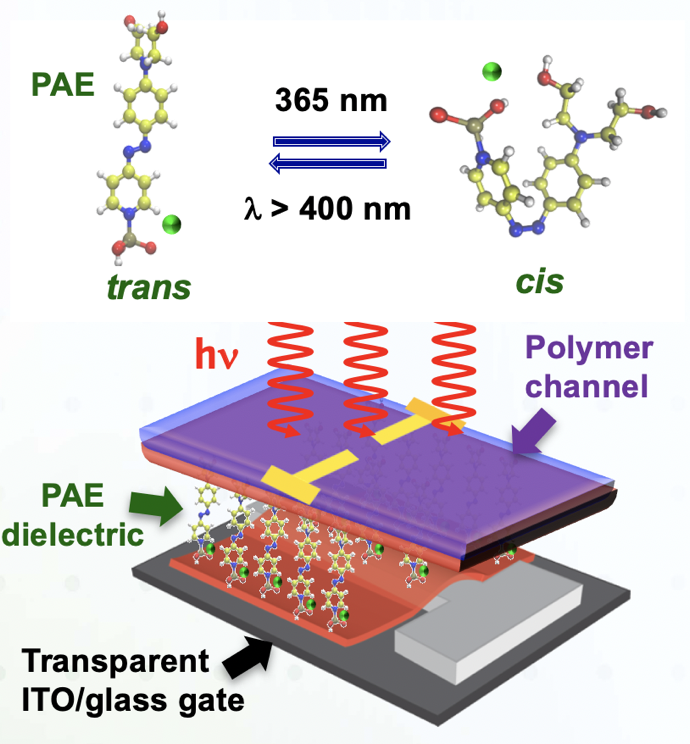 Charge transport in ultra-thin transistors strongly depends on the characteristics of the dielectric layer poised between the gate electrode and the current-conducting semiconductor channel. The current modulation scales with the capacitance, and therefore the inverse dielectric thickness, which is fixed in conventional devices. In this work, molecular self-assembly of highly polarizable PAE molecules was used to create reconfigurable dielectric layers whose capacitance changes with illumination. Upon ultraviolet optical illumination, the PAE molecules undergo a photoisomerization from an extended trans geometry to a compact cis geometry, which can be reversed upon illumination at longer wavelengths. The accompanying capacitance modulation provide new functions to optoelectronic devices. For example, the output of the photo-reconfigurable transistor depends on prior optical stimulation, combining the functionalities of logic and memory through the integration of new low-dimensional reconfigurable materials.
Charge transport in ultra-thin transistors strongly depends on the characteristics of the dielectric layer poised between the gate electrode and the current-conducting semiconductor channel. The current modulation scales with the capacitance, and therefore the inverse dielectric thickness, which is fixed in conventional devices. In this work, molecular self-assembly of highly polarizable PAE molecules was used to create reconfigurable dielectric layers whose capacitance changes with illumination. Upon ultraviolet optical illumination, the PAE molecules undergo a photoisomerization from an extended trans geometry to a compact cis geometry, which can be reversed upon illumination at longer wavelengths. The accompanying capacitance modulation provide new functions to optoelectronic devices. For example, the output of the photo-reconfigurable transistor depends on prior optical stimulation, combining the functionalities of logic and memory through the integration of new low-dimensional reconfigurable materials.